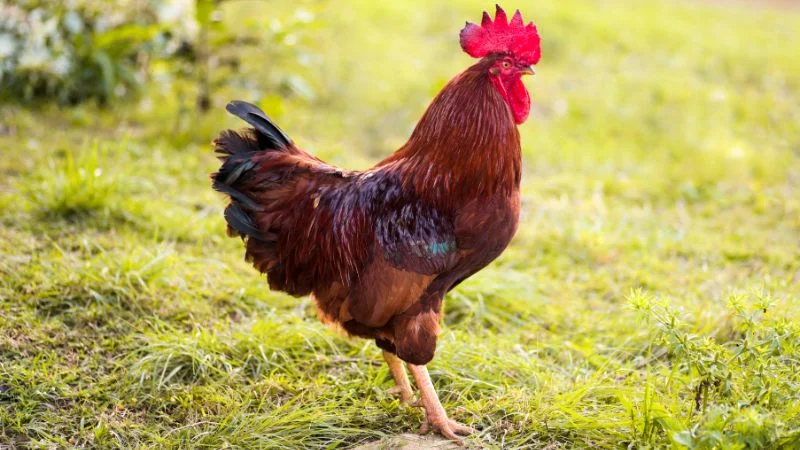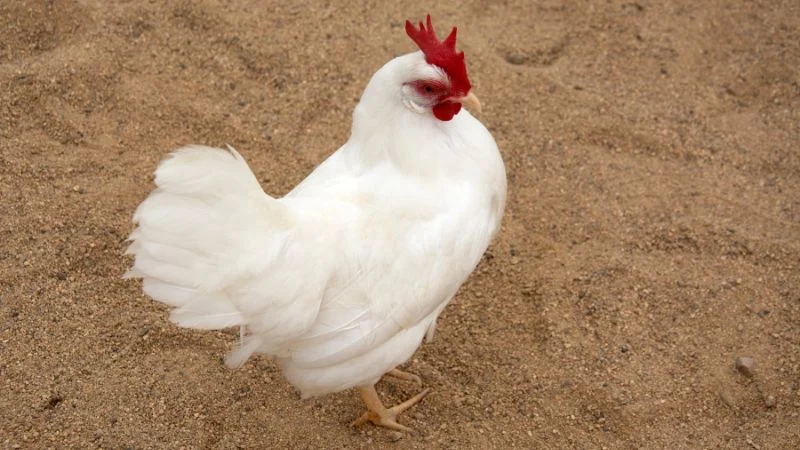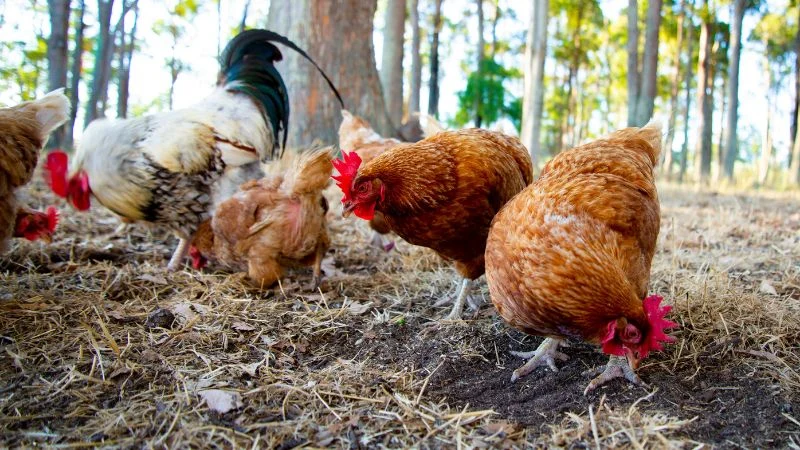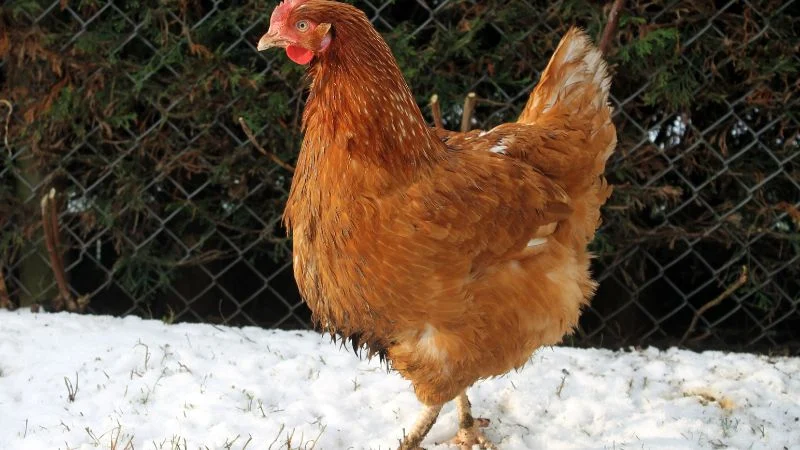🐔 Introduction
If you’ve ever looked into egg-laying chicken breeds, you’ve probably felt overwhelmed by all the choices—and maybe a little unsure about which one to pick. In this article, I’m going to focus on one specific breed that I’ve personally raised for eggs: the ISA Brown. Let me say right up front—this is an excellent egg-laying breed, but not the one you’d want for meat or breeding.
ISA Browns (often mistakenly called “brown ISA chickens”) are hands-down one of the best egg-laying chickens for backyard flocks in the U.S. Bred specifically to maximize egg production, they’re not only incredibly productive but also known for being docile, beginner-friendly, and well-suited to small backyard coops.
In this article, we’ll take a closer look at this remarkable hybrid breed—its origin, characteristics, egg-laying ability, and how to care for them—so you can confidently start (or improve) your own backyard flock.
II. What Is an ISA Brown Chicken?
The ISA Brown is a hybrid chicken developed in France in the 1970s, originally designed for the commercial egg industry. The name “ISA” stands for Institut de Sélection Animale, the company that created the breed, which later merged into Hendrix Genetics, based in the Netherlands.
Although it originated in Europe, the ISA Brown has become wildly popular across the U.S. for its reliable egg-laying, easy care, and suitability for both small homesteads and mid-size farms.
Genetically, the ISA Brown is the result of crossbreeding two well-known breeds: Rhode Island Reds (for their deep reddish-brown feathers and disease resistance) and White Leghorns (for their prolific egg production). This strategic pairing has produced a breed that offers the best of both worlds: high productivity and excellent adaptability.


🪶 Appearance
ISA Browns have a uniform reddish-brown plumage, a sleek, medium-sized body, and a tidy, compact frame. Most have a single comb, pale yellow legs, a slightly curved tail, and alert, intelligent eyes. Thanks to their distinct coloring and refined look, they’re easy to identify among other hybrid chickens.
🐣 How to Tell ISA Brown Hens from Roosters
One unique trait of ISA Browns is that their gender can be distinguished right after hatching—a huge plus for egg-focused backyard setups.
• Pullets (young hens) usually have rich reddish-brown down, with even, thick feathering.
• Cockerels (young roosters) tend to be lighter in color—creamy yellow or pale buff—and have sparser feathering.
III. Egg Production: Why Is ISA Brown So Famous?
If you ask any backyard chicken keeper in the U.S. which breed lays the most eggs, chances are they’ll mention the ISA Brown. This breed was literally designed for egg production—and it absolutely delivers on that promise.
🥚 Impressive Output
Under good care, an ISA Brown hen can lay between 300 to 320 eggs per year—that’s nearly an egg a day on average. This puts them right up at the top among all laying breeds, especially during their first 1–2 years of laying.
🥚 Consistent Egg Quality

ISA Brown eggs are:
• Light brown and attractive—great for resale at a local market or farm stand.
• Uniform in size—most fall in the Large category (according to U.S. standards).
• Strong-shelled and less likely to crack, making them easy to store.
🔁 Year-Round Layers with Minimal Downtime
Another huge benefit is how consistently ISA Browns lay, even with minor seasonal changes. They tend to keep laying right through the year, especially in their first season, without long breaks due to molting or cold weather. This makes them incredibly reliable for backyard flocks—you’ll rarely run out of fresh eggs, even in winter.
⏳ Peak Productivity Window
ISA Browns usually start laying at around 16–18 weeks old and reach peak productivity in their first 18 to 24 months. After that, their egg production gradually tapers off. With proper care, they can continue laying for another year or two, though not as consistently.
📌 Quick Note: As mentioned in the intro, ISA Browns are not for breeding. They’re a hybrid breed, engineered to inherit the best traits from both parents. While it’s possible to hatch their eggs, the second-generation chicks (F2) won’t have the same productivity or consistency as the original ISA Brown hens. That’s also why you rarely see ISA Brown roosters around.
The most efficient approach is to buy ISA Brown pullets, keep them for about 2 to 2.5 years, and then cull and replace the flock once their production drops. A helpful tip: instead of starting with 3–4 hens all at once, you can stagger your flock—raise 2 hens in the first year, then add 2 more the next. That way, you’ll always have eggs, even when some hens start slowing down.
IV. Temperament and Adaptability
One of the best things about ISA Browns is how adaptable and gentle they are. They’re not just productive—they’re easy to care for and incredibly people-friendly.
🧒 Gentle and Kid-Friendly
ISA Browns are often described as one of the nicest chicken breeds to raise. They’re easy to tame, neither flighty nor aggressive, and they tend to come up to people on their own. They don’t mind being handled, making them ideal for families.
If you’ve got young kids, ISA Browns are a great choice—they’re safe, sociable, and give your children a chance to learn about animal care in a fun and gentle way.
🐔 Low-Flight, Moderate Activity
Unlike some more active breeds that like to roost in trees or hop fences, ISA Browns are more mellow. They aren’t strong fliers and rarely attempt to escape low enclosures. This makes them much easier to manage in small backyards or gardens with modest fencing.
🏡 Low-Maintenance and Highly Adaptable
ISA Browns aren’t picky about their housing. They do well in semi-industrial setups, standard backyard coops, or even basic DIY enclosures. Whether you’re in a warm southern state or somewhere with chilly winters, they’ll adapt well—as long as they have shelter and winter insulation when needed.
They also tend to be hardier and less prone to illness than many other breeds, as long as you stick to basic vaccinations and keep the coop clean.
✅ Bottom Line:
If you’re looking for a chicken that lays well, behaves nicely, requires little fuss, and won’t stir up trouble in your garden—ISA Brown might just be your perfect match.

V. Nutrition & Essential Equipment for Raising ISA Browns
ISA Browns are easy to care for, but to maintain their exceptional egg production and overall health, you’ll need to pay attention to a few basics—especially diet and the right setup. Here’s what you should prepare if you want your “golden egg layer” to live up to its full potential.
🍽️ High Nutritional Needs – Protein- and Calcium-Rich Diet
With an average output of 300–320 eggs per year, ISA Browns require a high-protein diet (16–18%) and regular calcium supplementation. Here are three top-rated products to consider—great for beginners or those looking to boost egg performance:
• 🟢 Manna Pro 16% Layer Feed – includes probiotics to support digestion
👉 Comes in 2×16 lb packs—ideal for a small flock of 4–6 hens over a few weeks.
• 🌿 Organic Chicken Feed – Layer Pellets (Non-GMO, Corn-Free, Soy-Free – 2 lb sample)
👉 A great option if you’re aiming for clean, non-GMO eggs at home.
• 🐛 FLYGRUBS – 10 lb Black Soldier Fly Larvae – packed with calcium and natural protein
👉 A perfect supplement for hard eggshells and glossy feathers.
| Product | Type | Key Features |
| Manna Pro 16% | Layer Feed | Probiotics for digestive support |
| Organic Feed | Non-GMO Pellets | Corn- and soy-free |
| FLYGRUBS | BSF Larvae | High calcium; improves feather gloss |
💡 Tip: Make layer pellets or crumble the staple of their diet, and use FLYGRUBS as a treat or nutritional boost 1–2 times per week.
🪣 Proper Feeders for Small Backyard Flocks (4–6 Birds)
With small backyard setups, the right feeder can make a big difference. ISA Browns have strong appetites and may fight over food if the feeder is too small or poorly designed.
💡 If you notice a lot of spilled feed, try using spill-proof feeders or those with deeper edges—they can save you money in the long run.
👉 Check out our guide: Best Chicken Feeders for Backyard Flocks – includes rodent-proof, gravity-fed, and other ideal feeders for 4–6 hens.
💧 Clean, Consistent Water Supply
Laying hens, especially ISA Browns, need constant access to clean water. A lack of water—even for a short period—can lower egg production.
Use automatic waterers or nipple drinkers to reduce contamination and make daily maintenance easier.
👉 Don’t miss our article: Best Chicken Waterers for Small Flocks – perfect for households with fewer than 10 birds, easy to set up, and low-maintenance.
💡 Pro Tip: ISA Browns eat the most in the early morning and early afternoon. Always keep feeders and drinkers in a dry, well-ventilated area with overhead protection from rain.

VI. Drawbacks of the ISA Brown Breed
Although ISA Browns are ideal layers for backyard families, there are a few limitations you should consider before raising them:
• Not suitable for breeding: As a commercial hybrid, ISA Browns are not ideal for home breeding. While their eggs can hatch, the offspring won’t retain the same egg-laying performance or characteristics. That’s also why ISA Brown roosters are rarely seen on the market—you’ll need to buy new pullets each season to maintain a productive flock.
• Limited peak laying period: ISA Browns typically lay heavily for about 18–24 months from the time they start producing (around 18 weeks of age). After that, egg production declines significantly—this is common among industrial hybrid breeds. So from hatch to production decline, their “prime laying lifespan” is usually 2 to 2.5 years.
• High nutritional needs: Due to their prolific laying, ISA Browns require a continuous diet rich in protein and calcium. Without proper nutrition, they may become lethargic, lay fewer eggs, or produce weak eggshells.
• Moderate disease resistance: As a selectively bred hybrid, ISA Browns have average immunity—less hardy than some heritage breeds. Clean coops and regular vaccinations are essential to prevent infections.
• Not ideal for meat: Their body size isn’t optimized for meat production, making them a poor choice for dual-purpose (eggs + meat) flocks.
🔎 Truthfully, these aren’t really “drawbacks,” but rather important considerations to keep in mind if you want to get the best results from your ISA Browns.
💡 Pro tip for beginners:
ISA Browns are still a fantastic choice if you understand and can meet their dietary needs. Just plan to refresh your flock every two years, and consider mixing in a few heritage breeds if long-term sustainability is your goal.
VII. Should You Add ISA Browns to Your Backyard Flock?
ISA Browns are an excellent choice if your main goal is to have a steady supply of fresh eggs year-round without needing a complicated setup. Here are some common scenarios to help you decide:
• ✅ Great if you want high egg yield, easy care, and kid-friendly birds:
ISA Browns are prolific layers with friendly temperaments and excellent adaptability. If you’re keeping chickens in a backyard setting primarily for daily eggs, this is one of the best breeds to start with.
• ⚠️ Think twice if you want to breed or preserve genetics:
Because they’re commercial hybrids, ISA Browns don’t pass on consistent traits to offspring. Roosters are also hard to find. If you’re planning to breed chickens at home, consider pairing them with more genetically stable breeds like Rhode Island Reds, Plymouth Rocks, or Australorps.
🧺 Final Thoughts: ISA Brown – The Ideal Backyard Egg Layer
If you’re looking for a breed that lays plenty of eggs, is low-maintenance, friendly, and perfectly suited for backyard or free-range family setups, ISA Brown is a top contender. While their laying peak is relatively short and they’re not good for breeding, you’ll get a steady supply of clean, delicious eggs for up to two years.
Raising them isn’t overly complicated—just ensure proper nutrition, use the right feeder and waterer, and consider integrating them with compatible breeds. You’ll have a healthy, high-producing flock in no time.
🧑🌾 From my own backyard chicken-keeping experience, I can say ISA Browns are truly worth every penny. If you’re ready, try starting with 4–6 hens, a good no-waste feeder, and a quality layer ration—you might be surprised by how many eggs you’ll collect each morning!


